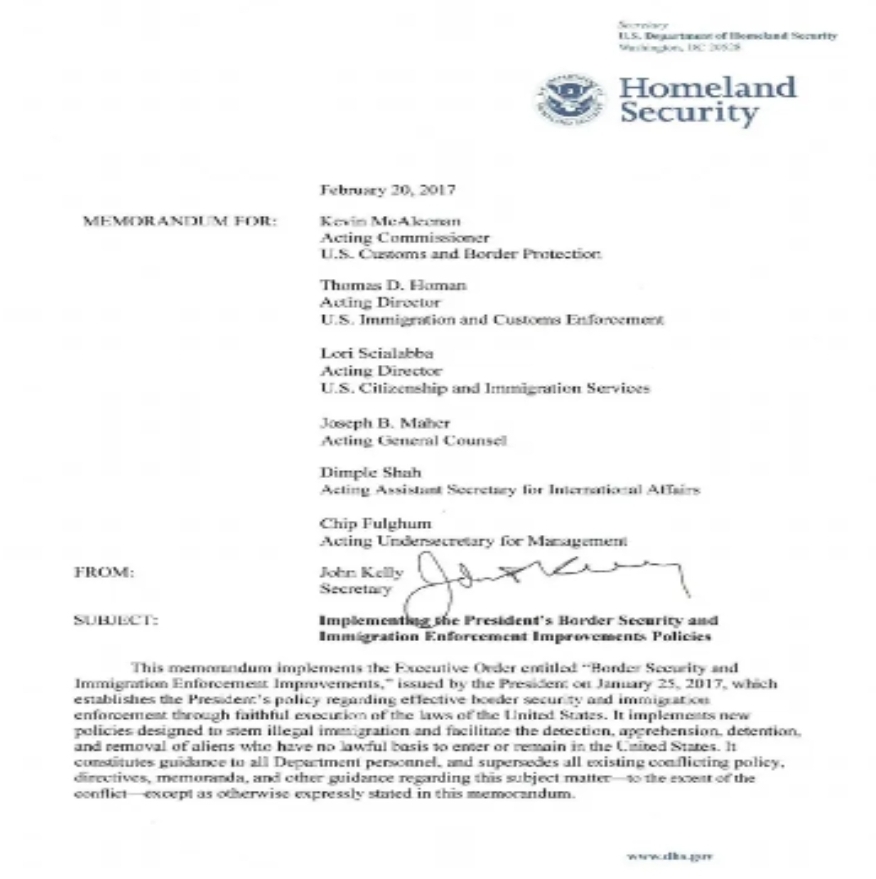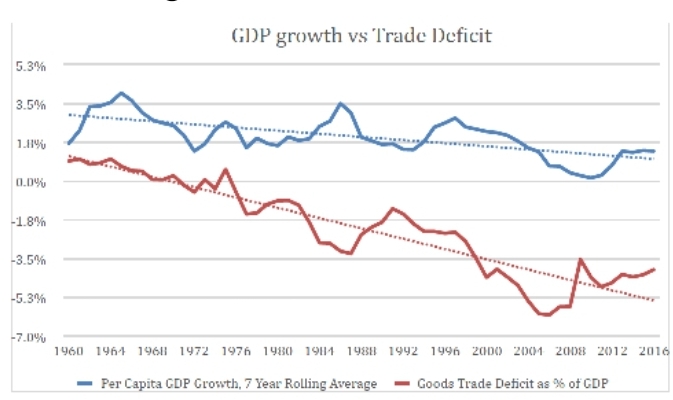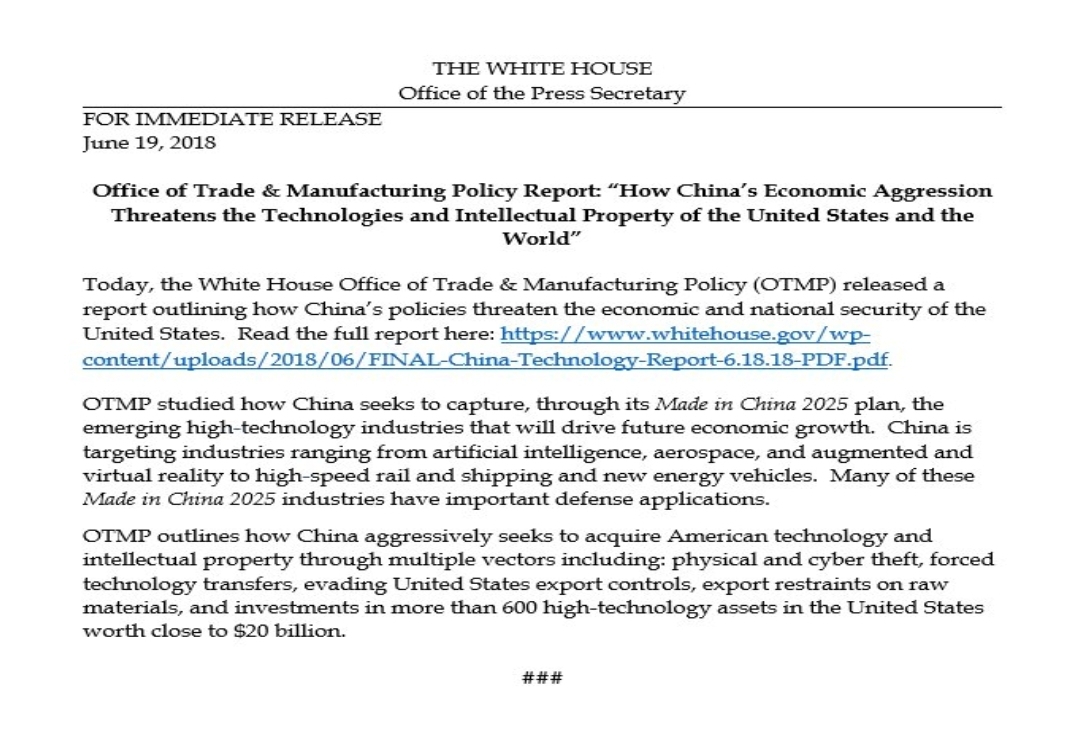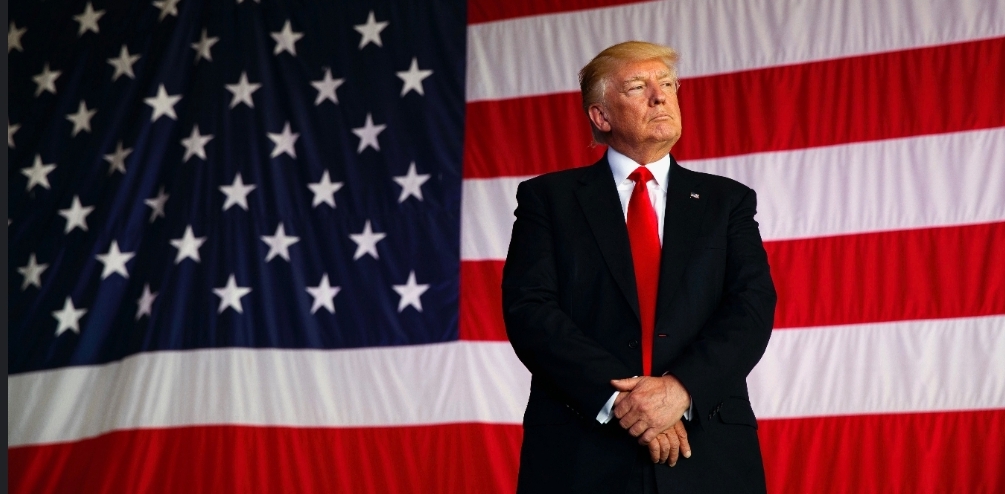The presidency of Donald Trump began on January 20, 2017. He was inaugurated as the 45th president of U.S after succeeding Barack Obama. Trump has made many questionable decisions regarding the U.S. He rolled back numerous environmental protections as well as reduced the enforcement of existing regulations. He ended the Clean Power Plan and also withdrew from Paris Agreement on climate change mitigation.
He failed to repeal the Affordable Care Act and also took numerous actions that hindered its functioning as well as sought to have the courts rule the entirety of the ACA unconstitutional. There was which helped people pay less income tax. There were many questionable laws like the “The tax cuts and job acts law” and other laws that he has implemented in the health care sector, trade and even newthe US immigration policies that have brought a change in the socio-political landscape in the U.S. Some of them are explained below.

“Border Security and Immigration Enforcement Improvements” signed on January 25, 2017
Border security is important to the national security of the United States. The purpose of building a physical wall in the southern border is to prevent all the criminal activities that have been risking the security of the people of the United States as well as to ensure that the Nation’s immigration laws are faithfully executed. The transnational criminal organizations who operate sophisticated drug and human-trafficking networks and smuggle operations on both sides of the southern border contribute to a significant increase in crime rates and deaths of the United States public from dangerous drugs. Among those who illegally enter are those who seek to harm the Americans through the acts of terror/criminal conduct.
This wall was built within 180 days of the order and it included the current state of southern border security, all geophysical and topographical aspects of the southern border, the availability of Federal and State resources that are necessary to achieve complete operational control of the southern border, a strategy to obtain and maintain complete operational control of the southern border and the people who illegally enter U.S.A without inspection or admission shall be detained in the detention centres.

“Omnibus Report on Significant Trade Deficits” signed on March 31, 2017.
The chart below shows the correlation between America’s worsening trade deficit and declining inflation-adjusted GDP growth per capita. Between 1960 and the mid-1970s, the US was regularly growing by 3%-4% per year but from late 1970s onwards, these figures dropped.
After 2001, when China had joined the WTO, the growth rates declined further as the American production declined, in fact, the following 16 years of 21st century, the US failed to reach 3% in any year. Instead, even the annual growth rates had hovered around 1& for most years and were even negative twice.
For many years, the U.S did not acquire the full scope of benefits which were anticipated under a number of international trade agreements. The annual trade deficit in goods of the country exceeded 700 billion dollars and the overall trade deficit exceeded $500bn in 2016.
So, within 90 days of the date of this order, the Secretary of Commerce and the United States Trade Representative (USTR), in consultation with the Secretaries of State, the Treasury, Defence, Agriculture, and Homeland Security and the heads of any other executive departments or agencies with relevant expertise, as determined by the Secretary of Commerce and the USTR, shall prepare and submit an Omnibus Report on Significant Trade Deficits to the President

“The office of trade and manufacturing policy” signed on April 29th, 2017
According to the order, this new office’s mission would be “to defend and serve American workers and domestic manufacturers while advising the President on policies to increase economic growth, decrease the trade deficit, and strengthen the United States manufacturing and defence industrial bases.”
The release of this policy saw the US president suggesting that he was ready to issue a withdrawal from the North American Free Trade Agreement (NAFTA) which is a tripartite deal with Canada and Mexico which governed most of the trade over the last two decades. News was leaked that Trump was considering a withdrawal, it later emerged that he changed his mind and would continue to push for a renegotiation instead. The new report on trade deals will include coverage of NAFTA, according to the Secretary of Commerce. Trump also suggested that he might pull the US out of its five-year-old deal with South Korea because he thought that the deal is not benefiting the USA and the country is dying inside of Korea.
In fact even in the matter of China, OTMP had outlined how China aggressively acquires American technology and intellectual property through various vectors like physical and cyber theft, forced technology transfers, export restraints on raw materials and investments in more than 600 high technology assets in United States worth around $20 billion.
This led to Trump imposing a 10% levy on $200bn worth of Chinese products at first during May 2019. Later he even announced plans to impose a 25% tariff on $325bn of other Chinese goods
There was an increase in the import tariffs too like that of Aluminium and Steel. The idea was to encourage people to buy these raw materials locally thinking that it will boost the US steel and aluminium industries as more company will try to buy their goods.
By Virtika Choudhry
Reference links:
https://www.prosperousamerica.org/cpa_testimony_omnibus_report_on_significant_trade_deficits
https://www.bbc.co.uk/news/world-43512098
https://www.whitehouse.gov/presidential-actions/executive-order-border-security-immigration-enforcement-improvements/




